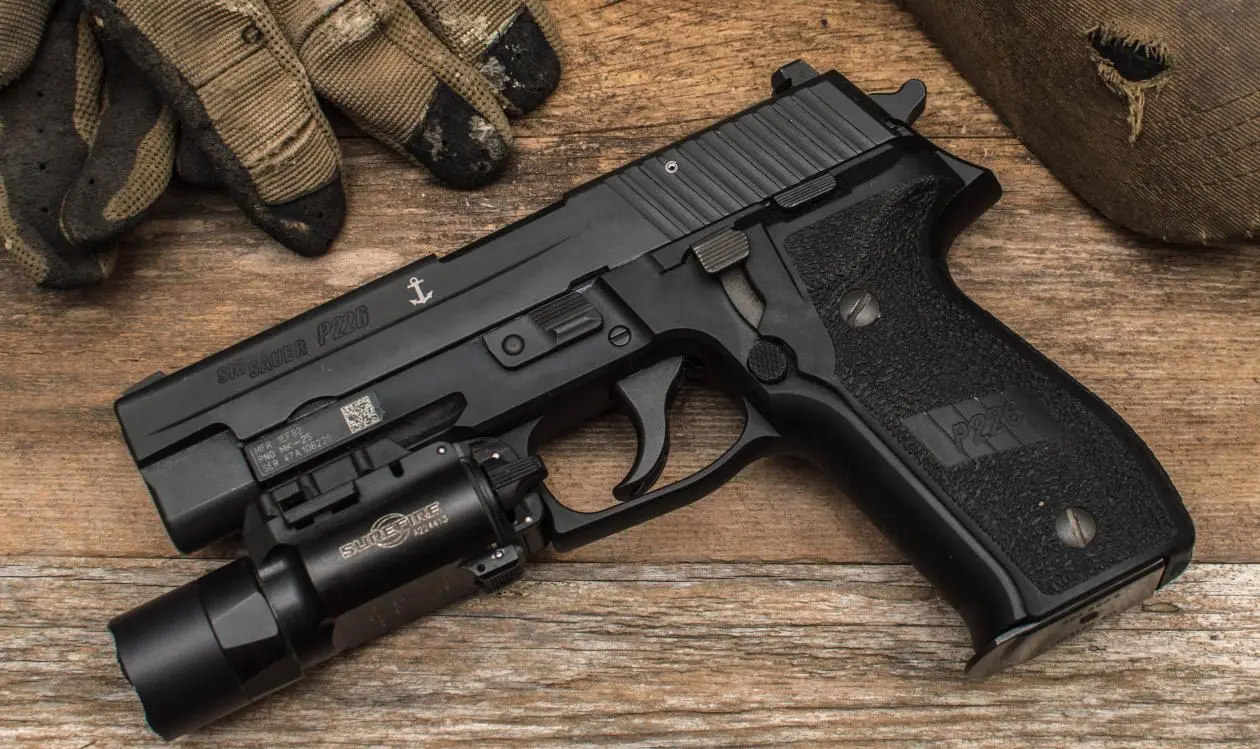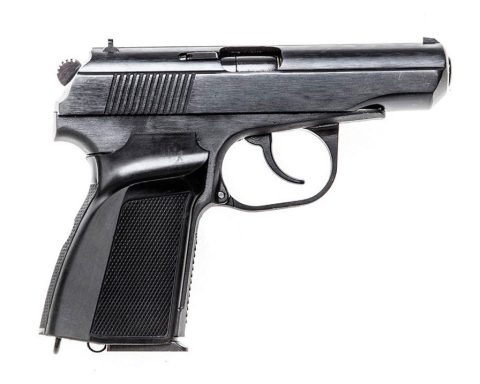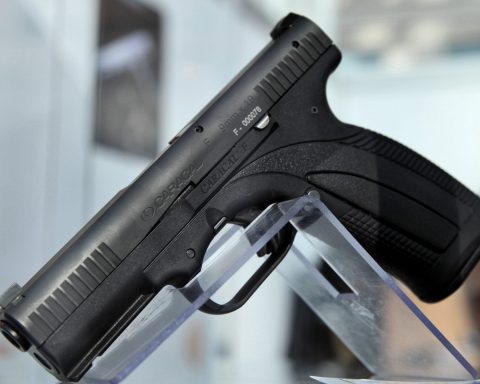The SIG Sauer P228 is a condensed variation of the well-regarded Sig Sauer P226 handgun. The P226 has garnered acclaim as one of the most widely utilized service pistols among military, law enforcement, and security agencies globally. The P228, a smaller iteration of the P226, has been in production since 1988.
Introduction
The P228 was introduced in 1988 and can be characterized as a fusion of various features. In terms of dimension, it is similar to the Sig Sauer P225 but boasts the high magazine capacity of the P226, which is shorter in length and has a shorter grip (13+1 rounds). The P228 has undergone extensive testing and evaluations, widely reported in publications within the firearms industry and universally praised as an exceptional weapon in its category.
Design and Features
The SIG Sauer is a versatile, compact handgun designed for short-range combat and primarily intended for use by police officers. Its firepower and caliber make it suitable for uniformed personnel who wear it openly, while its compact size also makes it convenient for carrying under civilian clothing.
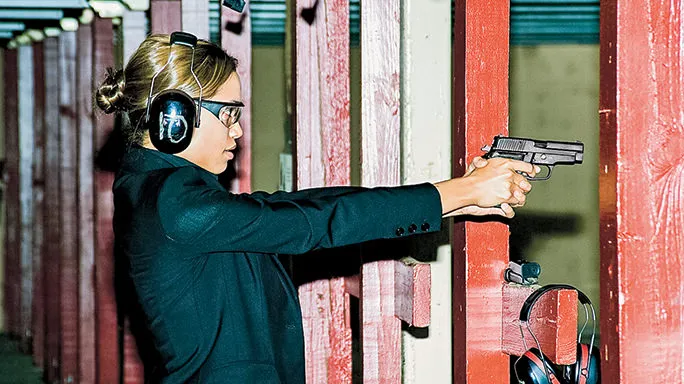
This versatility also makes it an ideal choice for self-defense purposes. In recent years, traditional large-service pistols have been less effective in close combat due to their length and weight, which can negatively impact balance and impede quick movement during firing. The SIG Sauer, at 180 mm in size, 136 mm in height, 37 mm in thickness, and weighing 745 grams without the magazine, is a more manageable option that has become a new standard in its category. The barrel is 98 mm long and features six grooves with a rifling twist rate of 250mm.
The SIG Sauer P228 is a compact pistol that boasts a shorter slide, barrel, and grip compared to its full-size counterpart, the P226. Its shape is also designed to be less angular, making it more suitable for concealed carry. This firearm is only available in 9×19 mm Parabellum caliber. It uses a short recoil system with a locked breech mechanism and features a double-action or double-action-only trigger. Additionally, it has a built-in firing pin safety and no manual safeties. The P228 also has a decocking lever on the left side of the frame; however, the double-action-only version does not have this feature.
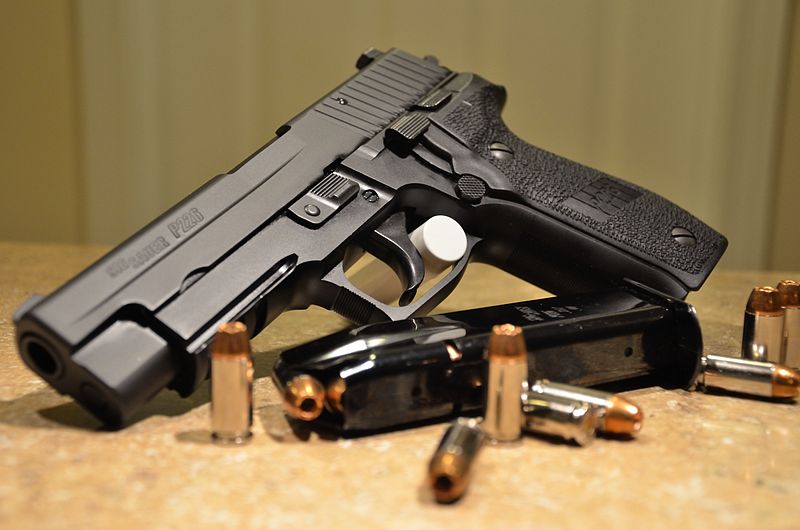
The Sig Sauer P228 is available in aluminum and stainless steel frames, with the aluminum version slightly lighter. It is fed by double-stack magazines with a 13-round capacity and can also use 15- or 20-round magazines from the full-size Sig Sauer P226. The magazine release button is also reversible. The Sig Sauer P228 is known for its durability, reliability, and overall quality. Its unique features, inherited from the P220-P228 line, set it apart from its competitors, such as the legacy lever for lowering the rifle inherited from the Sauer M38H.
To lower the cocked weapon, press the lever with your thumb and hold it firmly. Then, pull the trigger and release it slightly. This will reduce the cock to the front position. It is important to note that the weapon should be pointed in a safe direction, such as towards the floor, after this process. Additionally, the gun is secured by an automatic firing pin brake that will engage if the trigger is not fully pressed. Therefore, it is recommended to release the trigger as soon as the weapon moves forward.
It is worth noting that this process is not as complicated as it may seem and is quite practical. Similar mechanisms can be found in other weapons, such as the Walther P38 and the VIS Radom. However, the Sauer system allows the cock to be tensioned with a lever, which is considered more practical than direct locking. This is the relative advantage of this system.
The firing pin brake is not a new feature; it has been seen in previous models, such as the Walter P-38 and the Colts of the new series. However, the design used in the SIG Sauer is considered unique and innovative. It is also worth mentioning that this is the only brake on this gun, as there are no others like its ancestor, the first variant of the Sauer M38H. While this feature may have been unusual in the past, today, it is widely accepted that combat pistols of the “Double Action” system are safe enough with the firing pin brake alone if appropriately handled, with a bullet in the barrel and with the pistol lowered.

The Sig Sauer P228 is a popular handgun in the United States, known for its accuracy and ease of use. One of its key features is the 2 kg trigger pull required to activate the weapon, which is relatively low compared to other handguns on the market. However, some users may consider the lack of a brake a disadvantage. Additionally, all controls on the P228 are located on the left side of the weapon, with a lever for controlling the shutter, cocking the gun, and disassembly at the back, middle, and front, respectively.
The sights are designed for “combat” use, with wide, white markings for low visibility conditions. The handle is made of precision-machined aluminum alloy and contains a trigger mechanism that is completely enclosed. The magazine holder is located between the handle and the trigger guard, making it easy to insert and remove the magazine. The handle is also designed to be anatomically advanced and comfortable to hold, thanks to the excellently made plastic scabbard.
History and Development
The SIG Sauer P228 pistol, first introduced in 1988, quickly gained popularity among law enforcement agencies in the United States, including the Military Police, FBI, DEA and local police departments. The M11-A1 variant, which featured phosphate protection and Sig Lite Night Sights, was also released.
The P228 represented a significant advancement in handgun technology, as urban terrorism in the 1970s prompted a need for official pistols with greater stopping power, larger frame capacity and modernized design. SIG Sauer was one of the first manufacturers to capitalize on this new market, utilizing their well-known Browning-Peters lock technology.
During the 1980s, many new models of large military pistols were introduced to the global market, each with sub-models or variants. It became common for manufacturers to release shortened, competitive versions of their new models and to regularly update and redesign their products, similar to how car companies update their models each year.
Popularity and Use
The SIG Sauer P228, like its predecessor, is a highly sought-after handgun among law enforcement agencies that require a compact and discreet option, smaller than traditional full-size pistols. Additionally, it is a popular choice among civilians. In the early 1990s, the P228 was officially adopted by the United States military as the M11 and was issued to Military Police and some other units.
Variants
The SIG Sauer P229 is a compact variant of the P226, specifically developed for the American market. Its purpose was to supplement and eventually replace the previously used P228. Initially, the P229 was available in 9x19mm, but later chambering options in .40 S&W and .357 SIG were added. The versatility of this pistol allows for easy adaptation to any of these three calibers by simply swapping out the barrel and recoil spring.
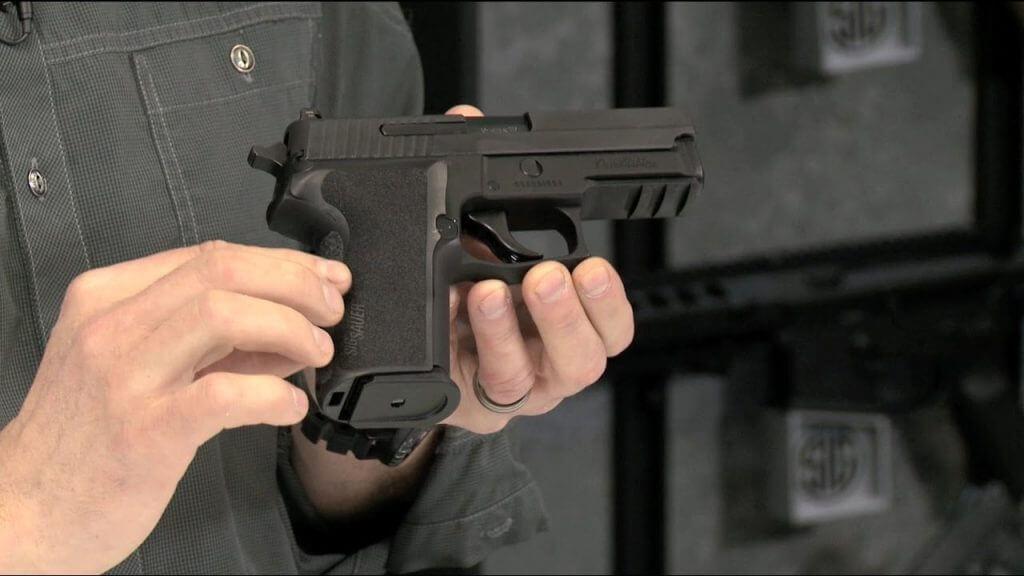
In terms of technical specifications, the P229 shares many similarities with the P228, with the exception of a heavier slide. This is a necessary design feature due to the P229’s ability to handle more powerful ammunition. The P229 is proudly produced in the United States.
Technical specifications
| Country of origin: | Germany / Switzerland |
| Manufacturer: | Sig Sauer |
| Caliber: | 9×19 mm |
| Weight (empty): | 825 g |
| Length: | 180 mm |
| Barrel length: | 99 mm |
| Muzzle velocity: | ? |
| Magazine capacity: | 13 rounds |
| Sighting range: | ? |
| Range of effective fire: | ~ 30 m |
